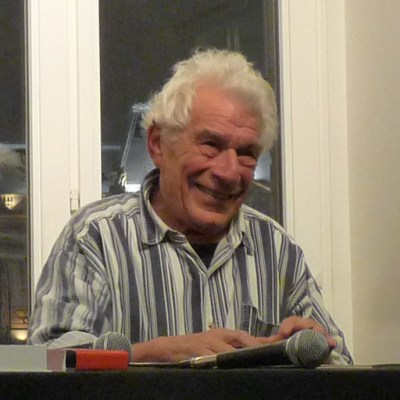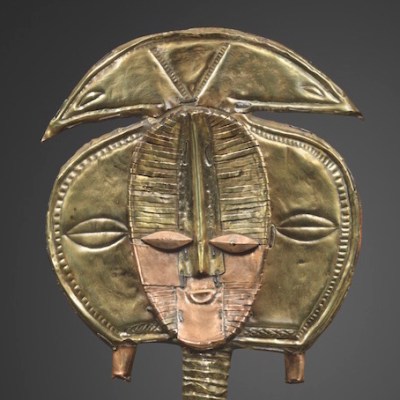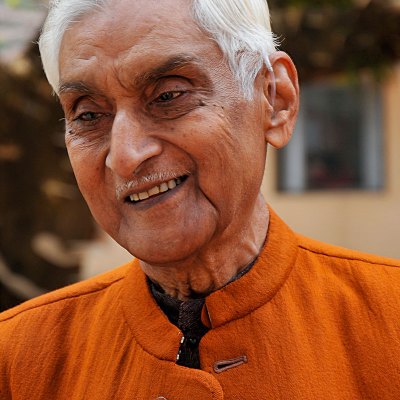The Swiss collector and museum founder Jean Paul Barbier-Mueller died in December 2016 at the age of 86. His wide involvement and generous support for the visual arts included the foundation of the Barbier-Mueller Museum in Geneva in 1977 and, 20 years later, the Barbier-Mueller Museum of Pre-Columbian Art in Barcelona. His literary patronage included setting up the Barbier-Mueller Foundation for the Study of Italian Renaissance Poetry at the University of Geneva in 1997. Below is Susan Moore’s 2010 interview with Barbier-Mueller for Apollo, focusing on his passion for, and knowledge of tribal art.
It is tempting to believe that there is a collecting gene. Certainly the Barbier-Mueller clan would seem to present a convincing case for one. For each of the past four generations of this Swiss family has produced passionate collectors. Over the last century and more they have honed and created what can only be described as a collection of collections, the breadth and quality of which are astonishing.
As I sit with Jean Paul Barbier-Mueller in the salon of his 17th-century, Mansart-designed hotel particulier in Geneva, it seems appropriate that the presence of his father-in-law should dominate the room. For Josef Mueller is the founder of this dynastic collection. Hanging here is not only Ferdinand Hodler’s portrait of him but also, wrapped around the walls, is the artist’s mesmerising, monumental frieze Die Liebe or Love. The 22-year-old Mueller spent an entire year’s income to secure it in 1909. He lived frugally in order to gather – by 1918 – seven Cézannes (including the Portrait of the gardener Vallier), five works by Matisse and five Renoirs, as well as Picassos and Braques. Hit by the economic depression of the 1930s, he shifted his focus to the powerful African tribal art that was astounding avant-garde artists and poets in Paris.
In 1955, his daughter Monique married Jean Paul Barbier, who had already begun to amass a distinguished library of the finest editions of French renaissance poetry but subsequently became intrigued by his father-in-law’s antiquities and tribal art. Over the years, she acquired the likes of Giacometti, Tinguely, Stella, Warhol, Bacon and Jeff Koons. Their eldest son Jean Gabriel has, with his wife Ann, formed the finest private collection of Samurai arms and armour in the world, and they are due to open the world’s first Samurai museum, in Dallas, Texas, this autumn. ‘It is about time he opened a museum,’ laughs his father, ‘he is 53; I was 47 when I opened mine!’
Of Jean Gabriel’s two brothers, Stéphane’s interest is coins and antiquities while Thierry’s is German contemporary art. The fruits of the fledgling fourth generation’s acquisitiveness are already apparent in the dazzling mineral collection of their nephew, Alexis.
While many of the Barbier-Mueller collections have remained very private entities, Jean Paul Barbier-Mueller has always been committed to exhibiting, researching and publishing the tribal art collection that he has assiduously expanded and refined over the decades. There are more than 7,000 pieces in the inventory, even after various constituent parts have been sold to, or donated to, other museums. ‘I did not imagine that I would open a private museum and, believe me, I did not imagine that one day there would be four Barbier-Mueller museums in the world,’ reflects this most courteous and civilised of men, ‘but I always had the idea of showing my pieces.’
Initially he created a private display space in a barn at his former home, and then in an office building. ‘I started to have visits almost every day from enthusiasts who had heard about the collection by word of mouth. This barn gave me the idea of making a private, but public, museum.’ After he moved to different headquarters which did not have appropriate space for the collection, he searched for a year for suitable premises until an employee in his property company pointed out that they already owned the perfect building, in the rue Jean-Calvin, in the heart of Geneva’s Old Town.
The museum of the now combined tribal collection opened in 1977, three months after Josef Mueller’s death. Mueller did not buy primitive art with the same discrimination that he bought paintings, and masterpieces jostled with the workaday. Jean Paul and Monique Barbier-Mueller took the decision to sell around 1,500 minor objects at Christie’s, reinvesting the proceeds in further acquisitions. ‘We have never stopped acquiring new pieces,’ Jean Paul Barbier-Mueller says, adding: ‘In this market you have minor pieces which are sold for high prices and you have very important pieces sold for a little, and also important pieces which are sold for a tremendous amount. Nobody can explain why.’
While he has proved a more systematic and scholarly collector than his father-in-law, he similarly places aesthetic value above ethnographical significance. It is telling that in the museum’s small, exquisite exhibition space each object is accorded an individual display case and a dramatic presentation that unashamedly encourages wonder and awe.
Crucially, the exhibitions generated by the museum have never been confined to Geneva. ‘My goal always was to organise travelling exhibitions,’ Mr Barbier-Mueller explains. ‘I think we have made more than 80 major shows in 32 years, all with huge catalogues.’ Indeed, the current show is the first to open here – ‘often they come to Geneva last, after 15 or 16 museum venues in the US.’ This exhibition, ‘Man-Made Jewels, Jewels of the Earth: Jean Paul & Alexis Barbier-Mueller Collections’, presents the extraordinary collection of ethnic jewellery embracing every era and almost every corner of the world, and materials ranging from gold, silver and jadeite to ivory, feathers and shells. Each piece is artfully complemented by the no-less-exuberantly structured minerals drawn from Alexis’s collection.
Jean Paul Barbier-Mueller describes his Damascene conversion as a collector striking in 1967. Up until then, he recalls, he had bought decorative, pleasant pieces, nothing worthy of a museum. ‘I had been working so hard I did not realise that I could now afford to go up a gear.’ He was on business in New York, and went to see a great primitive art dealer every day after work and each time reserved a statuette or a little mask. On the last day, the dealer showed him a large wooden ceremonial platter with a figure which had been collected by the Reverend Yates in the Melanesian Espiritu Santo in the early 19th century, and told him that was what he should be buying. With a discount, it was only $200 more than the sum of all the ‘trinkets’ he had reserved. ‘I owe him an immense debt of gratitude,’ he smiles.
The tragedies of the Biafran war proved an opportunity to buy more masterpieces. The chance discovery in Amsterdam of a statuette from the remote and tiny island of Nias, west of Sumatra, sparked a new adventure. Overwhelmed by the piece, he travelled there with Monique, began a photographic survey of the megalithic stone sculptures on the island, made over six voyages, and wrote a book. He also bought all the stone sculpture he could lay his hands on. His unique Indonesian collection of some 500 pieces was sold to the Musée du quai Branly in Paris in 2001, and 500 other works from South-East Asia were also donated.
Through the Tibetan dealers in New Delhi he was also able to form another outstanding and revelatory collection. This was of pieces made by the isolated Naga, tribes of former head- (and, peculiarly, foot-) hunters living in territories annexed by India in the 1920s and still largely closed to foreigners. Among them are extraordinary royal jewels and bronze sculpture made using the lost-wax method. Looking for an author, he tracked down the only known expert, Baron Von Furer-Haimendorf, who was then 88, so the collector wrote the book himself, using the Baron’s manuscripts and unpublished photographs. This collection was another gift to the Musée du quai Branly.
When I ask him what attracts him to these widely differing cultures, he replies: ‘It is the man who is behind each work. I am fascinated by the diversity and the capacity for creation of our species. When I discover a form of creativity I do not know, I am intrigued, astounded and want to know more. That is why I set up a foundation to research ethnic groups which have been neglected.’ He draws an analogy with music. ‘Until recently, everyone wanted to play J.S. Bach but no one was interested in the minor musicians around him. It is the same on the Ivory Coast. Everyone wants to study the Senufu – their secret initiation societies, their masks and fetishes, social organisation … But my wife and I made a lot of expeditions in the bush and discovered a little ethnic group of itinerant bronze casters next to them, the Lorhon, who have never been studied. It drives me crazy when I look at auction catalogues and see a lot of Lorhon bronzes which they wrongly describe as Senufu. I am sending an ethnologist.’
If he judges a collection to be complete, he is happy to see it go to a new home. When the South African mining company AngloGold Ashanti asked him if they could purchase his collection of gold artefacts and jewellery from Mali, Senegal, Ghana and the Ivory Coast, he agreed. ‘I had considered the collection complete for a long time – I had all the types of rings, pendants, fly whisks and scepters – and it had been travelling for 17 years.’ He continues: ‘It is not a question of price, I do not need money, it is a question of how you will treat it, how you will show it.’
Their idea was to open a museum to preserve the artistry of African goldsmithing and inspire modern jewellery design. It opened in an old colonial house in Cape Town in 2001. Last December, he signed a 10-year, renewable contract with the museum to send them annual loan exhibitions, starting with the current jewellery exhibition. ‘The museum has not changed since it installed the collection. Our new collaboration is a way of bringing it to life,’ Jean Paul Barbier-Mueller enthuses. He marked the occasion by donating the gift of an important and very early wooden ancestor Bambara statue from Mali. The institution is now the Gold of Africa Barbier-Mueller Museum.
In contrast, the Pre-Columbian collection is not complete, so it remains on long-term loan to Spain in ‘a jewel of a palace’ opposite the Picasso Museum in Barcelona. Since the loan began in 1997, he has added 300 more pieces, shipped to Barcelona immediately. He is not one to fill any perceived holes with unworthy examples.
After 43 years of seriously collecting tribal art, Jean Paul Barbier-Mueller’s passion has not abated. In fact, he believes it is this evident passion which has allowed him to succeed in his various projects. ‘The important thing for me is that I want people to understand that I am trying to establish a connection between the unknown people who are the authors of the works that I own and other unknown people who are the visitors coming to see them. I am in the shadows trying to organise this contact in the hope that these encounters will be a revelation–and in the dark the authors of these works are smiling in silence and probably happy to see that the objects that they did not make as works of art are important. By accident, out of a hundred craftsmen, one was an artist. Yes, I have tried to find the one that is the artist.’
Susan Moore is associate editor of Apollo.
This interview originally appeared in the April 2010 issue of Apollo.


